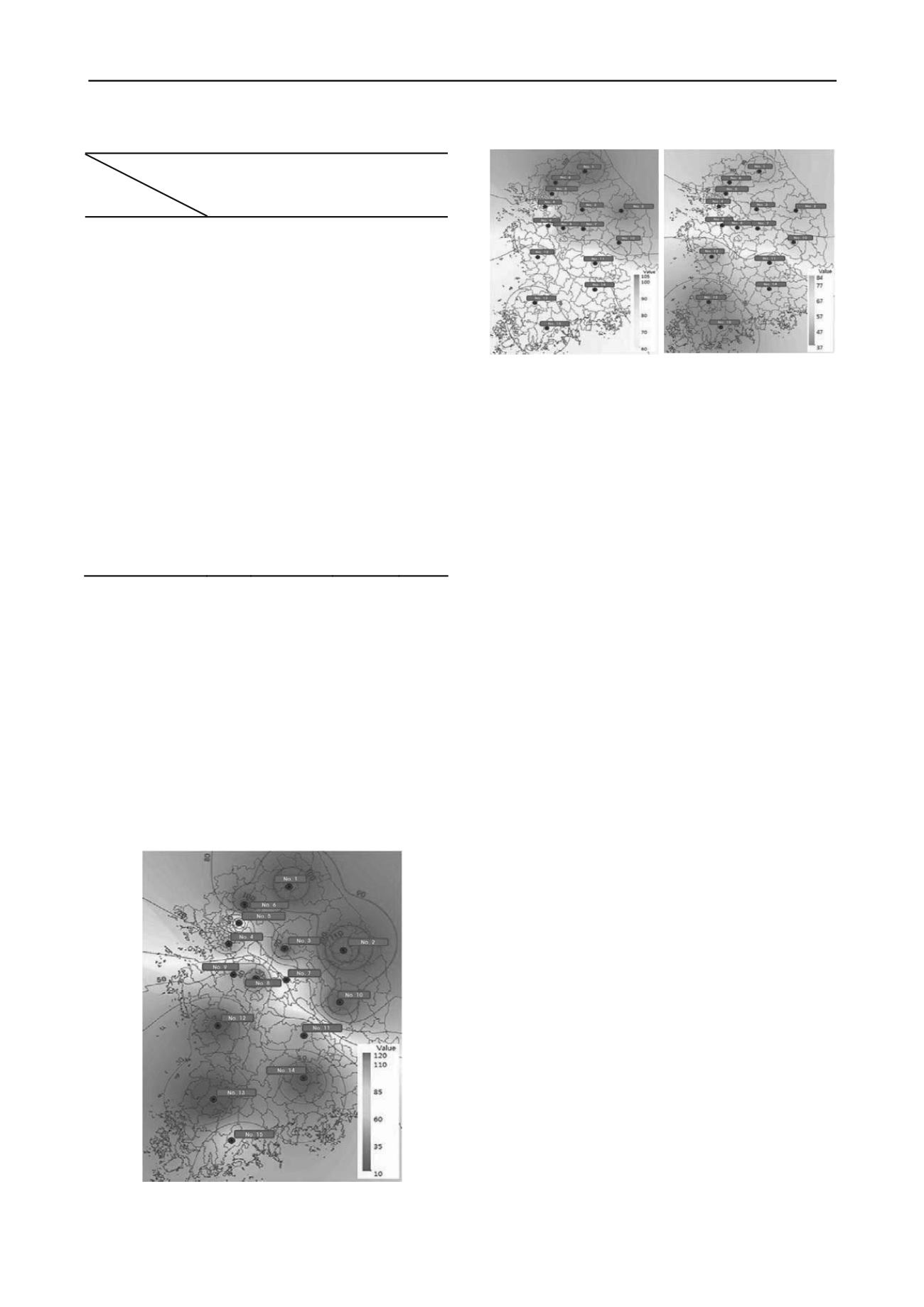
1356
Proceedings of the 18
th
International Conference on Soil Mechanics and Geotechnical Engineering, Paris 2013
Table 3. Results of comparison for frost penetration depth
Research
institute
Region
Field
data
(cm)
U.S. Army
Corps of
Engineers
(cm)
KICT
(cm)
JRA
(cm)
No. 1
110
95
105
85
No. 2
120
115
99
78
No. 3
92
110
96
74
No. 4
80
110
84
60
No. 5
55
104
94
72
No. 6
103
107
105
85
No. 7
28
90
92
69
No. 8
60
97
92
69
No. 9
40
94
84
61
No. 10
65
80
93
70
No. 11
60
70
80
56
No. 12
17
80
73
49
No. 13
10
71
61
38
No. 14
18
70
78
54
No. 15
50
67
54
40
(b) KICT (c) JRA
Figure 8. Maps of the frost penetration depth by field measurement and
empirical equations
6 CONCLUSION
The frost penetration depth of paved road was determined by
the field measurement. The moisture content and temperature
are measured and stored the data through solar panel data
transmission system and manual system, respectively. The
results of field monitoring for determination of frost penetration
depth are summarized as below.
5 MAPS OF FROST PENETRATION DEPTH WITH UING
FIELD AND EMPIRICAL RESULTS
(1) The paved road constructed with inclusion of anti-frost layer,
the temperature at subgrade for five field regions does not go
down below 0
℃
with the exception of site No.1, No.2 and
No.6. However, without inclusion of anti-frost layer, the
temperature at subgrade with the region which has the frost
index 550-650
℃
·day goes down below 0
℃
.
The maps of frost penetration depth were made based on 15
field monitoring datum using ArcGIS program. Interpolation
method was adopted to make frost penetration maps with IDW
(Inverse Distance Weighting). IDW is one of the most
commonly used interpolation techniques. Fig. 8 shows the maps
of the frost penetration depth made by using ArcGIS. Frost
penetration depths by the field measurements show significantly
different. However, the frost penetration depths using the
empirical equation of KICT show a similar trend in lower frost
index. In particular, the results by the empirical equation of JRA
show no significant differences among the regional category of
the frost index.
(2) The subbase and base courses are influenced by the
temperature below 0
℃
regardless of anti-frost layer is existed
or not for all of the freezing index categories.
(3) Frost penetration depth of field shows significant difference
by the regional frost index. However, the frost penetration depth
estimated by the empirical equation proposed by KICT shows a
similar trend in lower frost index. In particular, the results
calculated by the JRA empirical equation show no significant
differences among the regional category of frost index.
(4) Based on the analysis of field frost penetration depth
measurement, the reasonable design concept can be available
for road design.
7 ACKNOWLEDGEMENTS
This research was supported by a grant (11 Technology
Innovation F01) from Construction Technology Innovation
Program (CTIP) funded by Ministry of Land, Transportation
and Maritime Affairs (MLTM) of Korean government.
8 REFERENCES
Asphalt Institute., 1995, Performance grade asphalt binder specification
and testing,
Superave Serise No. 1
(SP-1)
Jiang, Y.J., Tayabji, S.D., 1999, Evaluation of in-situ moisture content
at LTPP seasonal monitoring program sites,
TRB 78
th
Annual
Meeting
, No. 990395
The Ministry of Land, Transport and Maritime Affairs, 2012,
Evaluation of validity for frost protection layer and development of
its construction criteria,
Construction & Transportation R&D
Report
Tomasz, K., 2009, Some factors affecting supercooling and the
equilibrium freezing point in soil-water systems,
Cold Regions
Science and Technology
59, 25-33
Yoder, E.J., Witczak, M.W., 1973, Principles of pavement design,
Second Edition, John Wiley and Sons, New York.
(a) Field measurements
Wu. Q., Zhang Z., Liu Y., 2010, Long-term thermal effect of asphalt
pavement on permafrost under an embankment,
Cold Regions
Science and Technology
60, 221-229


